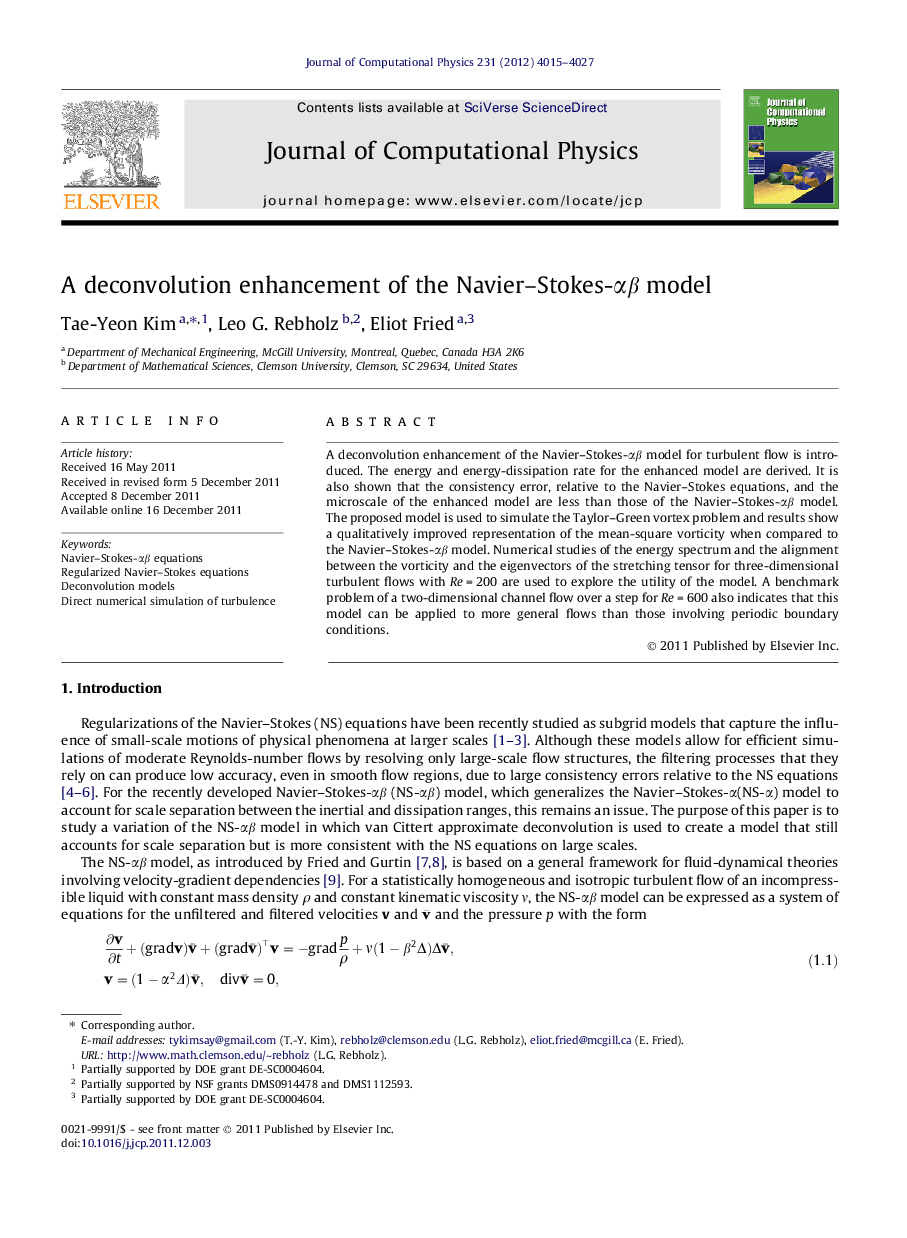| Article ID | Journal | Published Year | Pages | File Type |
|---|---|---|---|---|
| 520098 | Journal of Computational Physics | 2012 | 13 Pages |
A deconvolution enhancement of the Navier–Stokes-αβ model for turbulent flow is introduced. The energy and energy-dissipation rate for the enhanced model are derived. It is also shown that the consistency error, relative to the Navier–Stokes equations, and the microscale of the enhanced model are less than those of the Navier–Stokes-αβ model. The proposed model is used to simulate the Taylor–Green vortex problem and results show a qualitatively improved representation of the mean-square vorticity when compared to the Navier–Stokes-αβ model. Numerical studies of the energy spectrum and the alignment between the vorticity and the eigenvectors of the stretching tensor for three-dimensional turbulent flows with Re = 200 are used to explore the utility of the model. A benchmark problem of a two-dimensional channel flow over a step for Re = 600 also indicates that this model can be applied to more general flows than those involving periodic boundary conditions.
